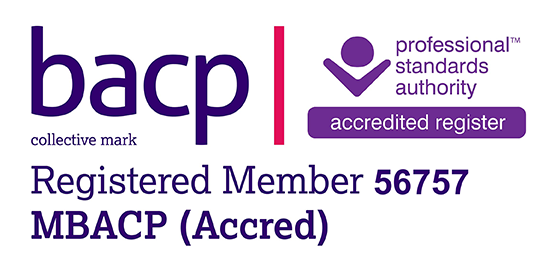February has been a more expensive month here at Well of Being. Often my client work is online so having a reliable laptop is central to me being able to fully connect with people. My old laptop was on its last legs, so I invested in a new one.
I was busy working on Monday when I knocked a glass of juice over on my desk…….and all over my new laptop! It quickly spread across the keyboard and my first thought was to tip it off – which I promptly did all over myself! I thought I would dry much better that a laptop would. Sadly, my soaking was in vain and the laptop fizzled and died, never to work again. No amount of rice or blowing was going to resuscitate it. Instantly my mind got busy with lots of thoughts and emotions.
I felt sad, upset, stressed and anxious amongst the many emotions that filled my mind. Now what should I do? In the moment I just wanted it all to be fixed – for the laptop to magically come back to life and there not to be a problem at all. I searched the internet for solutions, but nothing was going to change the fact that the laptop was well and truly broken.
My husband suggested contacting the shop I bought it from for help, and we contacted the home insurance company too. Neither of them could give me the instant answers I wanted. I had to wait but my mind was impatient. It wanted a solution NOW. The only instant solution was to go out and buy another. That was certainly one solution, but it was an expensive one, especially since I have only just bought a laptop, and not very environmentally friendly.
After a little while I naturally shifted to different feelings and as my thoughts slowed and changed and my distress eased, I realised in the moment I was more able to sit with the discomfort of it all. When I looked at what my mind had been trying to do, it was innocently trying to help by fixing the problem instantly to get rid of the distress.
Once upon a time, the flavour of my thoughts would have been more critical of me – what a stupid thing to do; how careless of me; its all my fault. Even though I am now more compassionate, my mind still throws up habitual thoughts – it sought to ‘do’ something to fix the situation. In my mind it was better to spend another sum of money and fix the problem than to be with the uncertainty of whether there was a different way. My mind was innocently trying to avoid uncomfortable emotions.
As time passed, I was more able to sit with the anxiety and stress and the idea of not being able to get all the work done I needed to. I could use my old laptop temporarily for zoom and I could think a little more clearly.
The laptop has now gone in for repair and will be back in about 10 days. I am writing this on my old laptop. When the spill first happened, I didn’t think I could bear 10 minutes of the anxiety, and here I am waiting 10 days and I’m still ok. My thoughts and feelings come and go as always – sometimes I feel frustrated, sometimes I laugh. When I am not thinking about the laptop, I’m not feeling any of the associated feelings.
Our minds have often been trained to get rid of or solve uncomfortable feelings. Your mind may do this slightly differently from mine, but we all have minds that create difficult emotions then seek to get rid of them in any way possible. We CAN learn to be with distress and discomfort, but often our initial thoughts are about easing distress as soon as possible, without much thought for the long-term consequences.
My mind wasn’t initially thinking about financial implications, or the impact on the environment of buying another new laptop. It wanted a quick fix for my distress at any cost. This is often the pattern that can lead us into unhelpful habits and behaviours – we find a quick fix without considering the longer-term consequences – we are, after all, human.
What does your mind do in times of distress? What are the things it suggests to you which might once have been helpful, but are no longer so effective? Can you take a moment to step back and observe what patterns your mind has to try to solve distress?
When we can step into that part of us that notices our thoughts, that sees what our mind is doing, we can often find enough space to pause and connect to a deeper wiser place in us that sees a wider, more considered view and we can, in turn, make decisions which will serve us better for the long run.
With February love. Sarah x
FAQ’s
How did you cope with the initial distress of spilling juice on your new laptop?
Initially, my mind wanted instant solutions. I wanted the problem to disappear immediately. As time passed, I shifted to a more accepting mindset, recognising that I can be with discomfort even though it doesn’t feel great. This allowed me to sit with the anxiety, explore options more patiently, and eventually find a more considered perspective that worked best for me.
Why are you sharing this personal experience in your blog?
Sharing personal experiences helps to illustrate the principles of Acceptance and Commitment Therapy (ACT) in real-life situations. By recounting my own journey through distress, my humanness and fallibility I want to normalise all our responses to distress. I hope to connect with you as an equal and demonstrate the power of mindfulness and learning to be with our experiences in navigating challenging situations.
What is mindfulness and acceptance and what have they got to do with this?
Mindfulness is the act of being present. We can connect to the present moment using one of our senses to enable us to bring our awareness to what is happening within and around us. It allowed me to observe my initial reactions and emotional responses without judgment. Acceptance is about allowing our experience to be just as it is without judgement of a need for it to be different. Acceptance enabled me to sit with the discomfort, recognising that quick fixes might not be the most effective or sustainable solutions. This takes time and practice and we all will get caught up in our thoughts at times. Humans are never present all of the time. That’s normal, and understandable given our busy lives and busy minds.
Can you give examples of unhelpful habits and behaviours that may arise from the desire for quick fixes?
Quick fixes often involve impulsive decisions without considering long-term consequences. For instance, in my case, buying a new laptop immediately might have eased distress momentarily but would have been costly and environmentally unfriendly. Often in distress we may turn to other things to ease our emotional discomfort such as alcohol, recreational drugs, shopping and food. These are not necessarily ‘bad’ but if they become a habitual response to distress they can have consequences which do not serve us.
How can I learn to be with distress and discomfort?
Developing the ability to be with distress involves mindfulness and self-compassion. By stepping back and observing our thoughts, we create space to connect with a deeper, wiser part of ourselves. This perspective allows for more considered decision-making and better long-term outcomes. This takes practice, so try starting with a short daily practice of bringing yourself to the present moment. You can try drinking your morning cuppa with more awareness of the smell and taste, the temperature of it and the feel of the mug; or you could spend 5 minutes outdoors, feeling the breeze, listening to traffic sounds or birdsong, or focusing on a tree or a flower.


